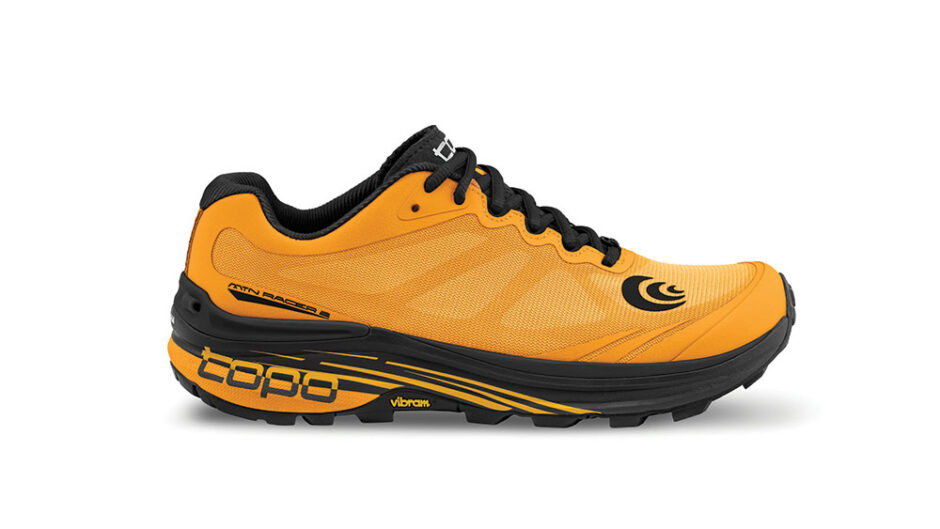One of the few silver linings of the pandemic was that millions of Americans discovered or rediscovered what the outdoors can do for the mind, body and soul. With no gyms to hit and most team sports on hiatus, escaping a crowded house as a family activity or solo—for a hardcore hike traversing mountain passes or just a few laps around a local park—offered myriad benefits. During an interview on CNN last summer, Dr. Anthony S. Fauci himself recommended that Americans, “Go out on a trail; breathe fresh air.”
Americans have heard the call of the wild. The participation stats bear this out. According to a joint report released from the AllTrails trail navigation app and RunRepeat.com data analysis site, the number of hikes lasting longer than 10 minutes logged in 2020 increased by 171.4 percent from 2019, and the number of individual hikers increased 134.7 percent from the previous year.
Not surprisingly, sales of hiking boots and outdoor gear have picked up, too. And as is often the case with hobbies, consumers tend to upgrade as their enthusiasm grows. (One only need look at the $5,000-plus carbon-frame race bikes zipping around Central Park to realize that if it makes the ride more enjoyable—and the rider more fashionable—it’s deemed a worthy investment.) Hiking, of course, is much easier on the wallet. A sturdy pair of boots or versatile trail runners costs in the low hundreds, max. What’s more, hiking is relatively safe and easy for most people to do whenever, wherever and in most weather conditions. That’s why many industry experts expect continued growth in the years ahead.
Here, six brand executives discuss how they are meeting the growing demand with new products and ways to keep the momentum going.
Peter Sachs
General Manager, Lowa Boots
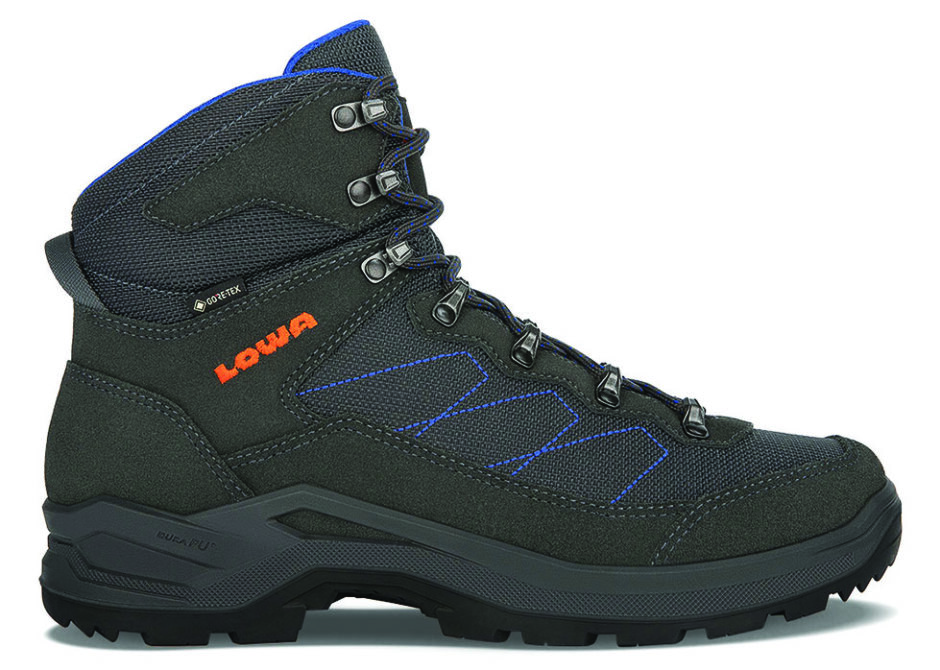
What’s new for 2021? The Taurus GTX in mid and low versions. It’s targeted at day hikers and is more value priced at $180 & $160, respectively. These light hikers are PU-injected with Monowrap, split leather and fabric uppers and waterproof and breathable with Gore-Tex liners. We also introduced the Maddox at $150 for walkers. This light, sporty shoe is great for those who are getting outside and walking for fresh air and fitness. They feature breathable athletic uppers and are built on a dual density DynaPU midsole for stability and cushioning.
Is there a category Lowa is addressing/expecting growth from most going forward? This is like trying to see the forest through the trees right now, because almost everything is exceeding expectations. However, we are focused on our Everyday Outdoor category for 2022 with models that are true outdoor shoes but can be worn every day. More to come on that soon.
Might Lowa address a more mainstream consumer in terms of distribution? Our distribution is generally specialty focused, and we’re sticking to that and have actually opened more new specialty accounts in the past 12 months than in the previous two to three years combined because retailers want authentic product for consumers who are really getting into the outdoors. We feel zero need to go downstream.
Any tips for retailers looking to meet this growing interest in hiking and other outdoor activities? Know your local market. Where are the local hiking trails and parks? Do some research to know what is available in your county and state for outdoor recreation. For shoe shops, carry good socks and care products. Maybe also carry some trekking poles and other items that sell well with hiking boots and shoes. Know the product and know the category. Don’t carry just an item or a low price point and think you have outdoors covered.
In addition to products, what other ways is Lowa trying to make sure this broader interest in the outdoors isn’t short-lived? We have four demo centers where consumers can test boots before they buy. One is at the YMCA of the Rockies in Estes Park, CO, and the others are with the AMC (Appalachian Mountain Club) at the Mohican Outdoor Center in Blairstown, NJ, Harriman State Park in Sloatsburg, NY, and at Pinkham Notch in Pinkham’s Grant, NH. Last year we also did a social media campaign with Deuter packs and Leki poles (#venturelocally) where we asked consumers to show us pictures of what they were doing outdoors. The variety of activities was fun and engaging! We will relaunch this in mid-May with those partners. We also launched LOWA Live on Instagram, which is an ongoing series of interviews with our athlete ambassadors. The goal here is for them to share some of their experiences to inspire others and relate how the outdoors can be accessible and achievable.
Why might this broader interest in the outdoors represent an ongoing macro lifestyle shift? The scary part of Covid-19 may be receding as vaccination rates grow, but there’s an indelible imprint in consumers’ minds about being in crowded places. The openness and health aspects of being outdoors, whether you’re hiking, biking, birding, etc. is appealing if, for no other reason, than stress relief. The outdoors is a new comfort zone. Many customers will go back to the cathedral tour of Rome or the family trip to Disney, and that’s great. But they’ve had some great experiences in the past year, and if they do those on just a few weekends or days off in the years ahead, the market will have grown.
Tony Post
CEO, Topo Athletic
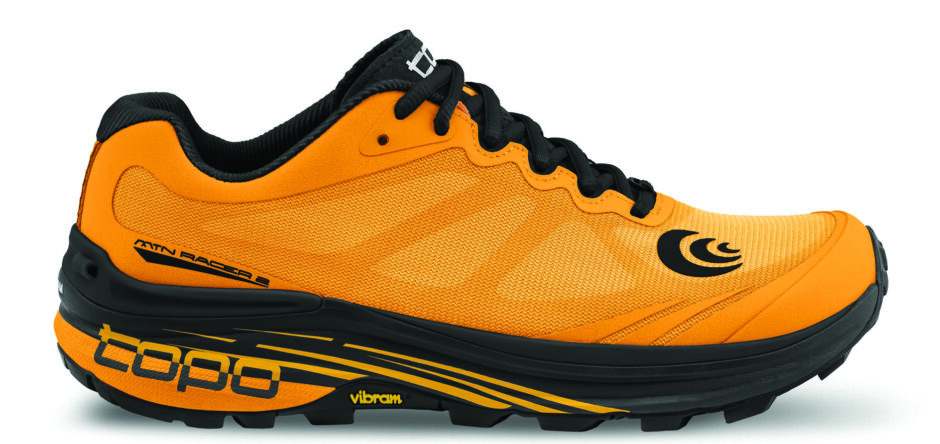
What’s new for 2021? We are launching a variety of new products now through February of 2022, including updates to some of our award-winning trail models. With more consumers discovering/rediscovering the benefits of outdoor recreation, awards have played a major role in guiding the decisions of today’s savvy shoppers. In a world that doesn’t really need another footwear brand, expert reviews have catapulted Topo into the spotlight; they’ve helped us broadcast our mission to create shoes that truly deliver a better experience that can keep people active for longer. Some of our recent recognitions include REI Co-op Editors’ Choice Award for the Trailventure, Runner’s World and Wired featuring the Ultraventure Pro in their roundups of the best new trail shoes, and Ultrarunning Magazine named our Ultraventure 2 as the Best Trail Shoe this spring. We can’t wait to launch the MTN Racer 2 next month, which Road Trail Run hailed as their “most favorite Topo yet.”
Is there a category Topo is addressing/expecting growth from most going forward? We’re seeing a great balance in business across genders and product categories. Road and trail are flourishing equally and we expect business overall to grow as we expand our retail footprint both domestically and abroad. I will add that we were pleasantly surprised by the success of our recovery line. It has sold out multiple times over. We look forward to expanding our offerings in this category later this year.
In what ways might Topo be addressing the needs of the more mainstream customer in terms of products and possibly distribution? Topo is fundamentally a very inclusive brand by design. Despite making products that achieve high performance and technical marks, we still retain a big focus on fit, comfort and craftsmanship. We believe in building tiers of product, and although every product in our trail category will feature Vibram soles by this fall, we make some great entry-level product that is very accessible to people new to outdoor recreation. Because we put so much emphasis on our fit and feel, consumers new to Topo can still find comfort and confidence in our shoes by picking their preferred level of cushion, drop and a variety of other features.
In addition to products, what other ways is Topo trying to make sure this broader interest in the outdoors lives on? We are big advocates for preserving wild spaces. We’ve been a long-standing member of The Conservation Alliance, and every Earth Day we donate a percentage of our revenue (not profit) to help protect our public lands and outdoor recreation. This year, we’ll be participating in the second iteration of The Conservation Alliance’s #WeKeepItWild Coalition Giving Campaign and donated five percent of our online sales during Earth Day week. We also work with organizations like Camber Outdoors and The Outdoor CEO Pledge to create equitable work spaces in our industry that support a diverse generation of outdoor enthusiasts to come.
Why might this broader interest in the outdoors represent a macro lifestyle shift? One of the few good things to come from the pandemic and people seeking refuge from it in outdoor spaces is that it cultivated a deeper connection and respect for the gift of nature during a time when we were simultaneously battling the natural course of evolution. Outdoors suddenly became one of the only safe places to be in the presence of others. I believe that feeling—that primal connection that many of us had lost—will be hard to forget and will be something people will continue to return to. The important work that needs to continue post-pandemic is making outdoor spaces accessible and safe for everyone, to diversify the outdoors so that it can be enjoyed across all generations, identities, lifestyles and demographics.
Chris Hufnagel
President, Merrell
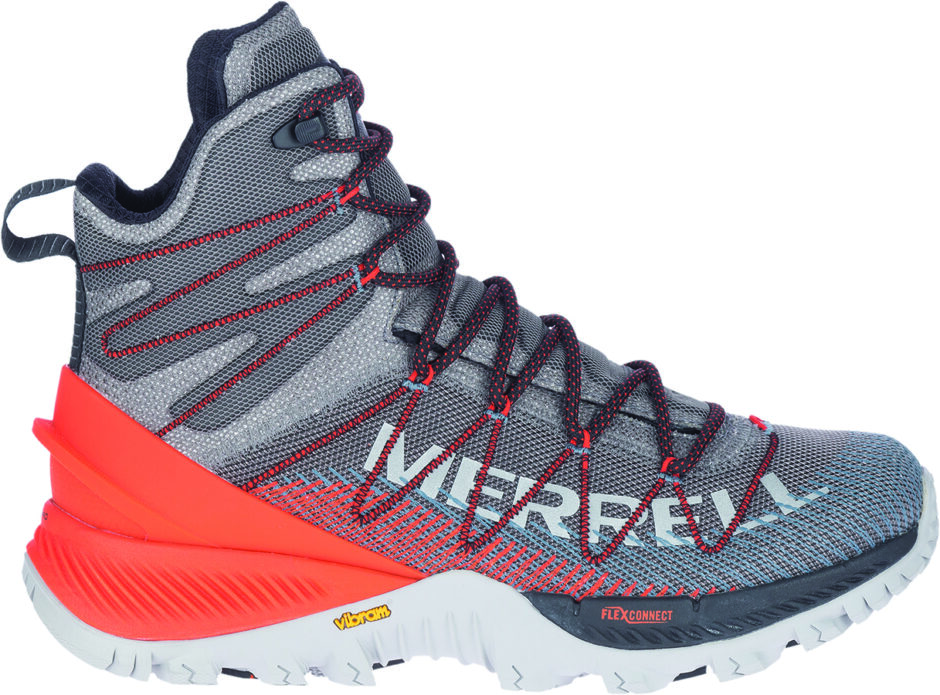
What’s new for 2021? We’re continuing to lean into what we do best and what we’re known for, which is innovative design, durability, out-of-the box comfort and versatility for all outdoor adventures with the goal of empowering everyone to confidently explore the outdoors—from backyards to backwoods. Our new collections cater to all outdoor activities, from walking to hiking or simply running errands. The best example of this is the continuous reinvention of our Moab collection, the best-selling hiking boot around the globe. We’re taking it a step further with the launch of an extension into trail running with Moab Flight, which has already been recognized with award-winning product reviews as a “go-to outdoor shoe.” We’re also launching Moab Speed, built for more rugged athletic hikes while delivering on style and colorful designs. Furthermore, we’re excited about our lead innovation in the winter category with Thermo Rogue 3, a lightweight, elite athletic hiking boot which launches later this year and has already received international award recognition for its top quality and functionality.
In what ways might Merrell be addressing the needs of the mainstream consumer? We believe everyone should be welcome in the outdoors and always say that the trail is for everyone. As a brand, we strive to be welcoming, approachable and inclusive to all—from the extreme outdoor enthusiast to the outdoor rookie. Our products are meant to help people feel adventurous, confident, empowered and like they belong. For example, earlier this year we collaborated with Jenny Bruso and @UnlikelyHikers on a unique iteration of Merrell’s Zion hiking boot in an ungendered colorway available in a range of extended sizes. Seeing a need to have more diversity represented in the outdoors, Jenny set out to build a community of hikers and adventurers of all shapes, sizes, genders and abilities. This collab further welcomes the underrepresented outdoors person to explore confidently. With this approach of getting more people into the outdoors, we strive to make sure our shoes are available where they are shopping. We are continuing to invest in building out our Merrell.com site for consumers who prefer to shop online. In addition to being in specialty outdoor shops like REI where our more advanced products are sold, we offer a range of products at stores like Dick’s Sporting Goods and DSW.
In addition to products, what other ways is Merrell trying to make sure this broader interest in the outdoors continues? Merrell is celebrating its 40th birthday this year with a mission to build an inclusive and sustainable outside environment for future generations to enjoy. We’re proud to partner with organizations and support causes with like-minded values. Earlier this year, we joined forces with Big Brothers Big Sisters to bring the power of the outdoors to more youth, who may not have adequate access to natural parks or public trails, with the goal of raising awareness and increasing equity for all. Additionally, we’ve been a strong supporter of The Conservation Alliance for over 10 years, advocating for community-based campaigns to help protect threatened wild habitat and outdoor recreation. Beyond our partnerships, we’re always looking for ways to honor the outdoors year-round. For example, in June we will be celebrating Great Outdoors Month where we will be encouraging people to take more time to explore the outdoors.
Why might this broader interest in the outdoors represent a macro lifestyle shift? The pandemic opened consumers’ eyes to the simple power of spending time outside. During a time of uncertainty, the outdoors has represented a place of peace, happiness, escape, adventure, safety and beyond. These new outdoor hobbies have impacted our lifestyles permanently and we don’t believe that anyone will take that for granted again. Consumers have developed a deeper appreciation for the outdoors during Covid-19 and flocked to products in the hiking, trail running and other outdoor categories. We don’t see this newfound love of outdoor activities slowing down and we want to continuously serve our brand’s fans in this space with products that allow them to enjoy being outside at all speeds, from walking to running to trekking.
Tom Dixon
National Sales Manager Outdoor, Ecco
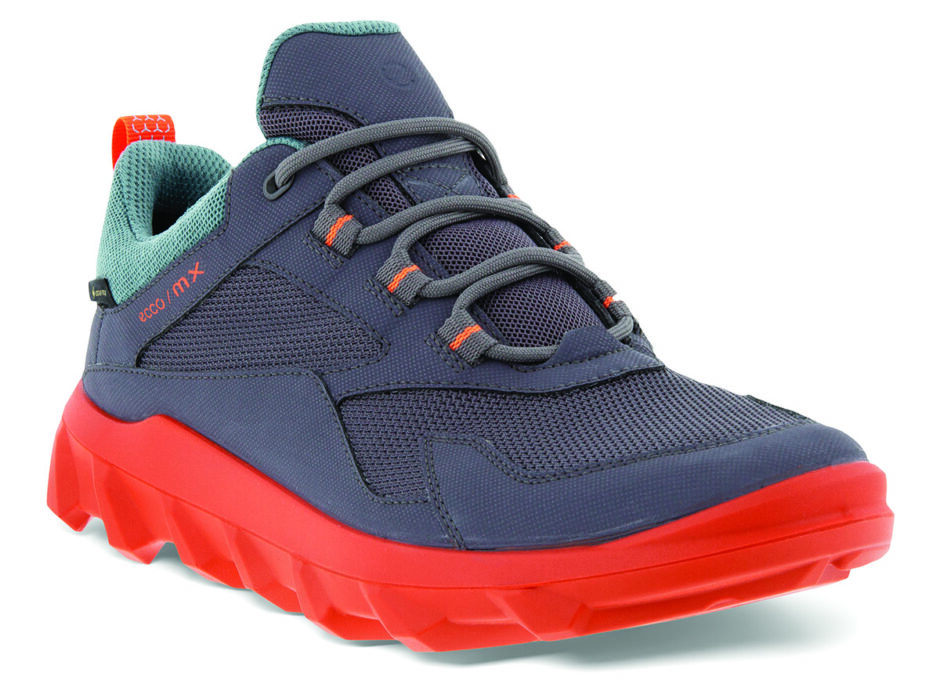
What’s the focus for 2021? Hybridization and multi-purpose is definitely our biggest opportunity. We have had a focus on this type of crossover product for a few years and are seeing the benefits, especially during and we expect post-pandemic. It’s about functional and athletic footwear that has technologies built for the trail but ascetics for an urban environment. Peak to pint, if you will.
How might Ecco’s hybrid approach to design best meet the needs of consumers? The athletic/outdoor hybrid category is one of our main focuses. It’s about fashion-forward, athletic, technical footwear. We’ve been seeing this for years in apparel, and footwear is just getting there. For us, it’s styles like our new MX, which is built on a robust sole that draws inspiration from motocross, lending it added grip and stability. It features a neoprene sock-like construction for a snug fit and the overall design evokes a smart, street-style aesthetic. In addition, our Exowrap sport sandal is a versatile design that can just as easily be worn in the elements, around town or at the beach. And our Biom 2.0, an update of a shoe originally designed for triathletes, is a futuristic-looking trail runner that features water-saving DriTan leather uppers, a Fluidform midsole technology that provides full support by holding the midfoot in place through a PU side-frame and heel through the unique wrap-around design of the sole, while the rubber outsole creates full contact with the terrain for excellent grip and stability.
In what ways might Ecco be addressing the needs of the mainstream customer in terms of distribution? The specialty store certainly remains an important avenue for success as those retailers hold a lot of knowledge and credibility. But the consumer is also much more intuitive these days and the online aspect of research is almost always a factor. As a shoe brand that has multiple categories, we want to make sure that we can serve and educate our customers about all our divisions and their individual competencies and success. Being able to tell our story consistently digitally through our channels, our wholesale partners and other means is an important strategy moving forward.
Any tips for retailers looking to meet this growing interest in the outdoors? Let new customers approach the outdoors in their own way. There is no right or wrong way to get into this lifestyle. A “hike” can mean many different things. For some, it’s summiting a 14er in Colorado, while for others it’s a weekend walk with the family. Let people move at their own pace and have some self-discovery. Once they are in, nurture those relationships and educate them on how certain products, classes, nutrition, etc. can enhance their experience.
Does this growing interest in the outdoors involve a much broader demographic? Yes, and that has always been Ecco’s approach to the outdoors. We aren’t top of the mountain people. We believe that the outdoors is for everyone and there should be no barrier to entry. Our hashtag is #betheoutsider and I think that speaks well to who we want to serve. We make the product with the functionality for the hardcore outdoors person but try to make it in a more approachable design and make sure our messaging connects. We’ve seen a lot of new customers come into the outdoors over the last year—a lot of latent demand for getting outdoors. It’s now our job as an industry to make sure they don’t leave. We must show them the long-term benefits of an outdoor and active lifestyle. When it comes to footwear, specifically, we must show them that a boot or shoe doesn’t have to be meant for one intended purpose and their spending power can go much further.
Davide Calcagnotto
COO, Garmont International North America
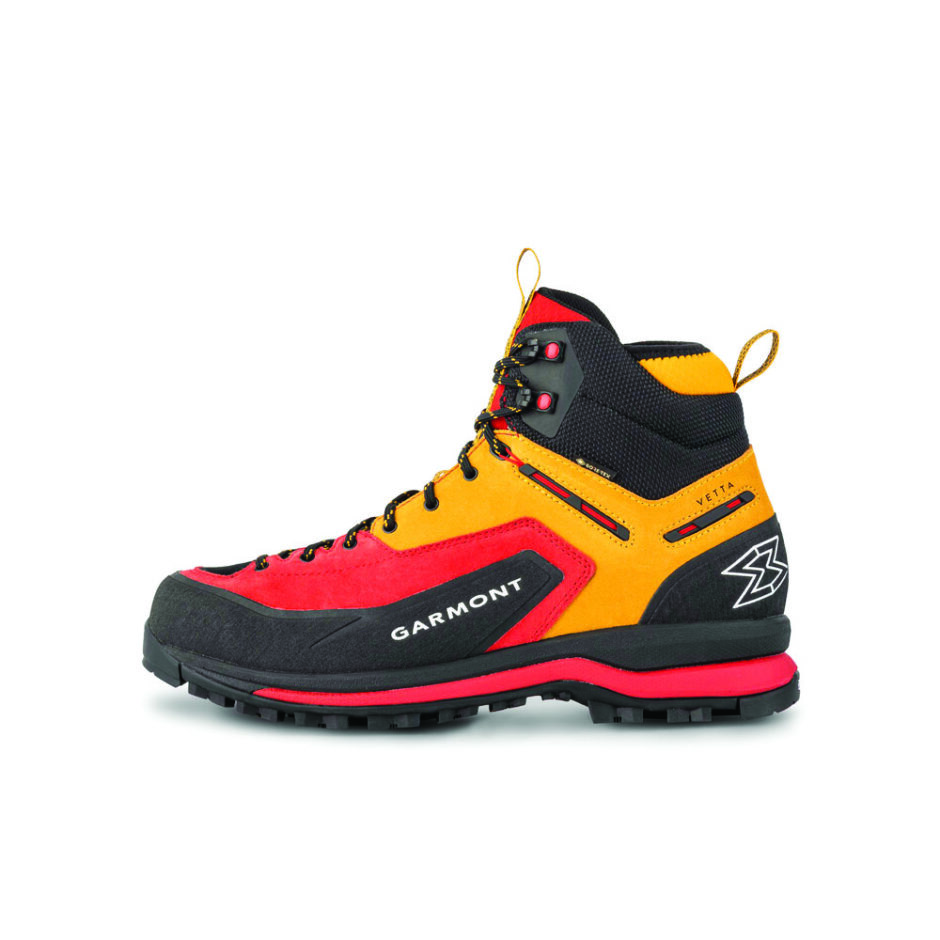
What’s new for 2021? The outdoors has been seen as a safe place by a broader community of consumers who don’t necessarily need the most super technical gear. What they do need is durable, comfortable, quality gear, such as our Vetta Tech GTX. This new Fall/Winter ’21 introduction is a versatile and lightweight boot that combines the design and technical features typical of an approach shoe with the versatility and comfort of a hiking boot. The mid cut protects the ankle and provides both flex and stability for better foot control even under a heavy load. The new last consolidates the technical performance of our iconic Vetta GTX model for approach and combines it with a wrapped fit that delivers enough volume in the forefoot to deliver exceptional comfort. The abrasion-resistant suede leather upper features ultralight Efoam inserts on the toe box and heel area for added protection. EFoam is an innovative material that guarantees not only excellent mechanical performance, but also considerable elasticity and flexibility and does not contain pollutants such as DMF or PVC.
Is there a category Garmont is targeting especially going forward? Garmont has always been known for its very technical, mountaineering product; that’s our heritage and we’ll always do our best to embrace that. However, the broader community of outdoor participants don’t necessarily need the most features-packed gear; they need the same key product attributes such as quality, durability and comfort. Which is why, in addition to our more specific mountaineering products, we also offer more all-round footwear options—a boot or shoe that can be worn from your house to the mountains, without the need of changing before the trail head.
In what ways might Garmont be addressing the needs of this more mainstream customer beyond product? We’ve built our brand on a passion for the outdoors and a love of adventure. Through our digital media channels, we dialogue directly also with this more mainstream consumer, sharing our passion, inspiring them to get outdoors, helping them learn about new activities and places to explore, and providing product information and suggestions. For example, the forced stop due to the pandemic led many consumers to reconsider the importance of reconnecting with nature and leading a more sustainable lifestyle. They are placing growing attention to the impact their choices have on the environment, and as an outdoor-loving company dedicated to developing product for the outdoor consumer, we’re mindful of the importance of social responsibility and the conscientious use of resources. Through our work processes, best practices, policies and products, we place attention on the impact of our actions both on our environment and on our community.
Why might Garmont be optimistic that this broader interest in the outdoors represents an ongoing macro lifestyle shift? This broader interest in the outdoors began years before the arrival of Covid-19, but the past year has hopefully helped accelerate and transform this interest into a more permanent lifestyle shift.
Mark Smith
Marketing Director, In-Sport Fashions, distributors of Mono Footwear
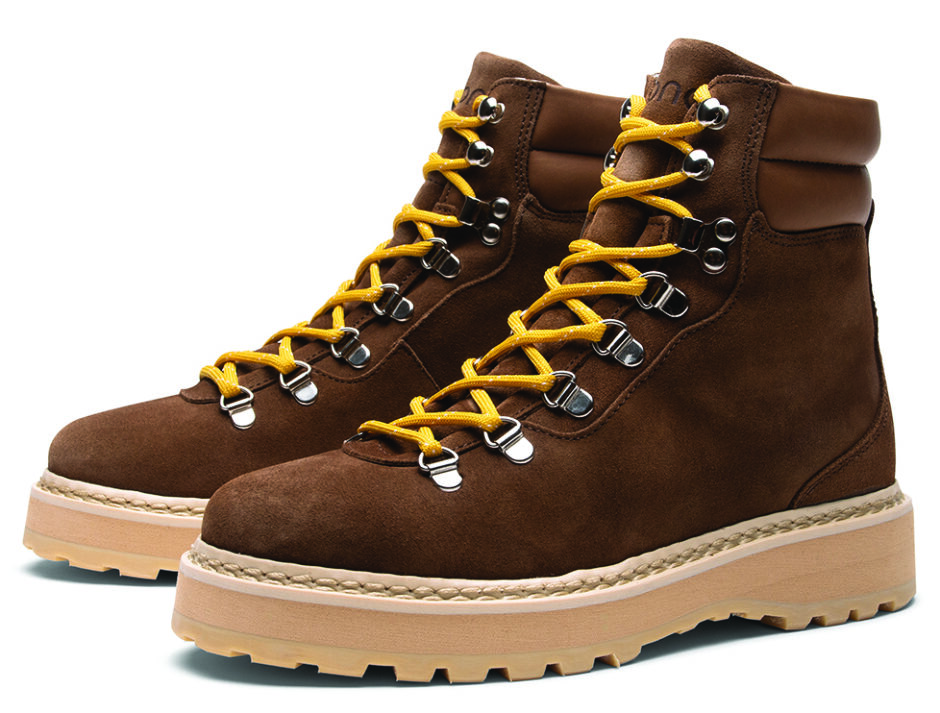
Why might Fall ’21 be particularly good timing for Mono to enter the North American market? First, there has been an astounding increase in people heading to the mountains during the pandemic, which has obviously led to significant interest in footwear that can tackle any adventure. Second, there is a trend where the outdoor aesthetic is being embraced by the fashion world, and so more and more urban dwellers are looking into beautifully made products that can exist in the city but also hold up if they choose to venture out.
What does Mono offer from a product perspective to meet this growth in consumers discovering/rediscovering the benefits of outdoor recreation? The Mono Footwear collection is skewed towards the outdoor adventurer and so there are many different hiking boot options for everyone. Mono also makes a high-quality product where, on select models, you’ll find Vibram outsoles, the finest Italian leathers and most boots made in Portugal. Other interesting facts about Mono that will broaden the customer base is that models are unisex and many come with the option of a shearling lining, helpful for those in colder climates. That said, the heart and soul of Mono is its family of hiking boots. Because people are getting out of the cities more and more, and wanting products that last, we see our Hiking, Hiking Core and Hiking Core Cap collections performing well in North America.
How might Mono differ from other brands in the marketplace? The classic, timeless designs of Mono mean you can acquire boots that can tackle a long hike, but also look great in the city. Our Scandinavian minimalist design aesthetic means you can own one versatile product, instead of needing two unique pieces. Finally, the quality of the boots and shoes are made to the highest standards, which adds an element of sustainability to the brand’s offering.
Who is the Mono target consumer and how may that play into your distribution strategy? The short/easy answer is almost everyone as we want the outdoors to be as inclusive as possible. But I think our target customer definitely leans towards mountain culture, or at least spends some time off paved paths. We want to speak to people looking for adventures in the outdoors, but if we see it in the local bar, we’re fine with that too. That’s why we’re targeting outdoor retailers, big and small, because not only is our product technical, it also appeals to the outdoor masses. And with the trend of fashion and outdoor worlds intermingling, we’ll also look at certain fashion accounts that understand the appeal of a minimalist, well-made leather boot.
In addition to products, what other ways might you be trying to make sure this broader interest in the outdoors isn’t short-lived? We are only beginning this journey in North America, but this is something we will be working on. The outdoors needs to be accessible to everyone, but also demystified so that people realize it isn’t just about summiting huge peaks and camping in the cold. A hike can be five minutes, five miles or five weeks, but just getting out there is the point. We want to partner with people, brands and non-profits that enable people to experience what we have been experiencing for decades.
Why might you be optimistic that this broader and growing interest in the great outdoors represents a macro lifestyle shift? Having distributed outdoor brands for over 30 years, we love the outdoors and are always excited to see new people discover it. The outdoors is now more accessible than ever. People are being more mindful of their quality of life and how physical activity like walking can improve that. There’s also the exodus from the cities as people try to find a better work-life equilibrium. All these aspects combined will mean more people falling for nature, and although we might not retain everyone, it will most certainly be a macro lifestyle shift.

